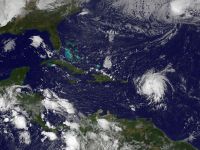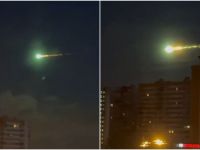New satellite pictures of Israel's nuclear reactor were published on the front page of an Israeli mass-circulation newspaper Friday, a sign that the country's nuclear weapons capability is being discussed here with increasing openness after decades of silence, reported The Associated Press.
The Yediot Ahronot daily said the high-resolution pictures came from the Federation of American Scientists (FAS) Internet Web site. The pictures, taken July 4th by IKONOS, a civilian satellite, are sold on the Internet by Space Imaging Corp, said the report.
These new revelations, prompted by the June 2000 publication in Hebrew in Israel of Avner Cohen's book “Israel and the Bomb,” coincide with a debate in Israel over nuclear weapons policy. Israel is by now the only nuclear weapons state that does not acknowledge the fact that it possesses nuclear weapons, said FAS report.
The report said that the most significant finding derived from the new imagery is that Israel's nuclear weapons stockpile probably consists of between 100 and 200 nuclear weapons. Some previously published estimates had suggested that Israel might possess as many as 400 nuclear weapons.
It has long been assumed that Israel manufactures nuclear weapons at the Dimona reactor in the southern Negev Desert, though Israel has never admitted it, sticking to a policy of nuclear ambiguity, according to the AP.
In 1986, Mordechai Vanunu, who worked as a technician at Dimona, was sentenced to 18 years in prison for giving pictures taken inside the reactor to The Sunday Times of London. Based on the photographs, experts said at the time that Israel had the world's sixth-largest stockpile of nuclear weapons.
Vanunu was captured in Rome by Israeli security agents and taken back to Israel.
In the photographs published Friday, the reactor's dome is clearly visible in the largest picture in the paper, along with the rest of the buildings in the complex. In a second photo spread, on an inside page, Yediot Ahronot provided a five-panel illustration entitled, “How to make a bomb,”said the agency.
Earlier this week, Israel television broadcast satellite photos of Dimona taken in 1968 and 1971, also provided by the Federation of American Scientists Web site. A report on the site said the new pictures show that the capacity of the reactor has not been increased.
Up to now, Israel's military censor has prevented local outlets from using pictures of the reactor. But the Internet cannot be controlled, David Ronen of the censor's office in Jerusalem told the AP.
“If it's taken from the Internet, it can be printed, as long as the source is noted,” Ronen said.
Israel's official policy about nuclear weapons is “opacity,” statements meant to leave all the possibilities open without admitting anything. There has been only sporadic debate about the issue, and the anti-nuclear lobby in Israel is tiny, added the agency – Several Sources.
© 2000 Al Bawaba (www.albawaba.com)







